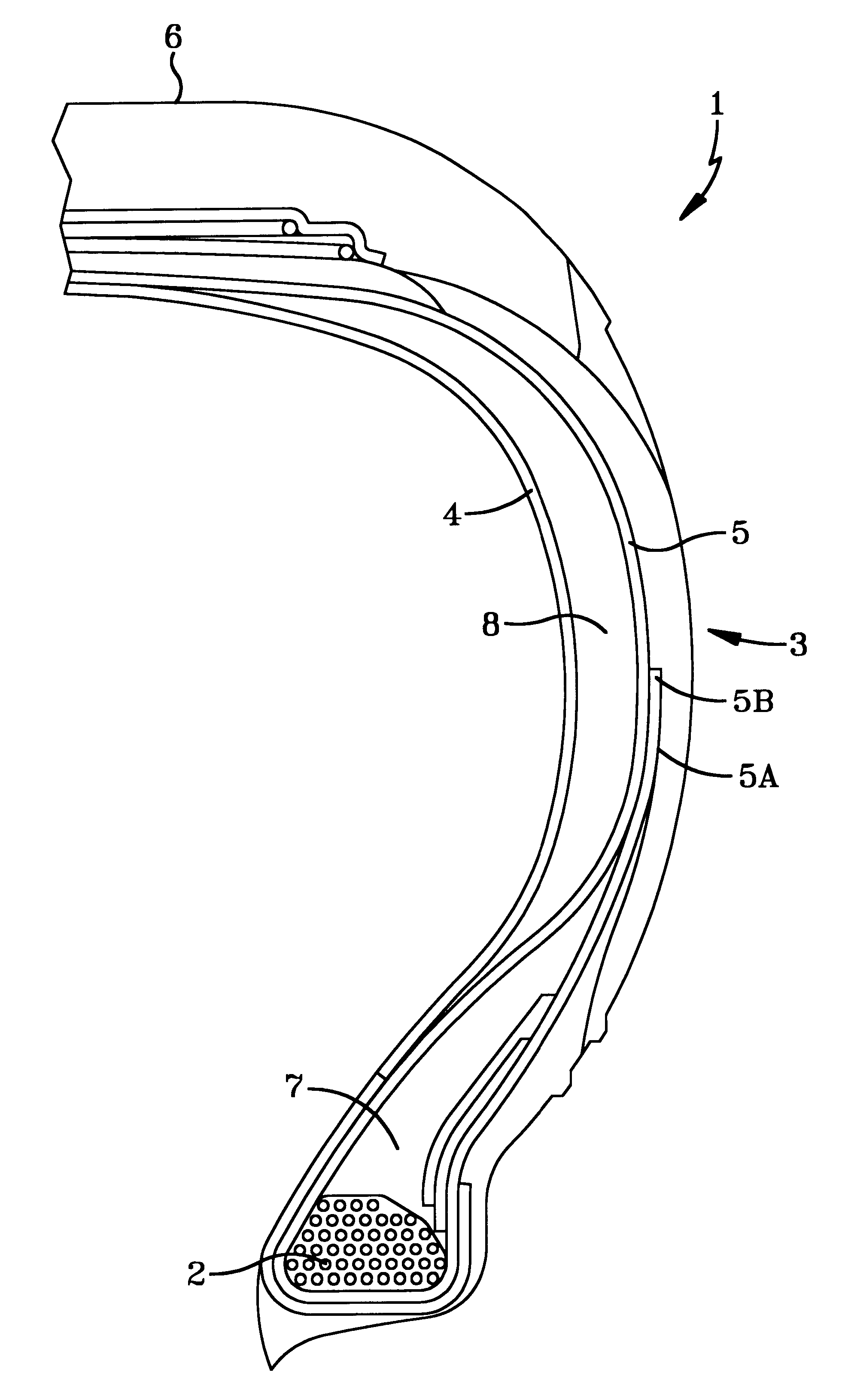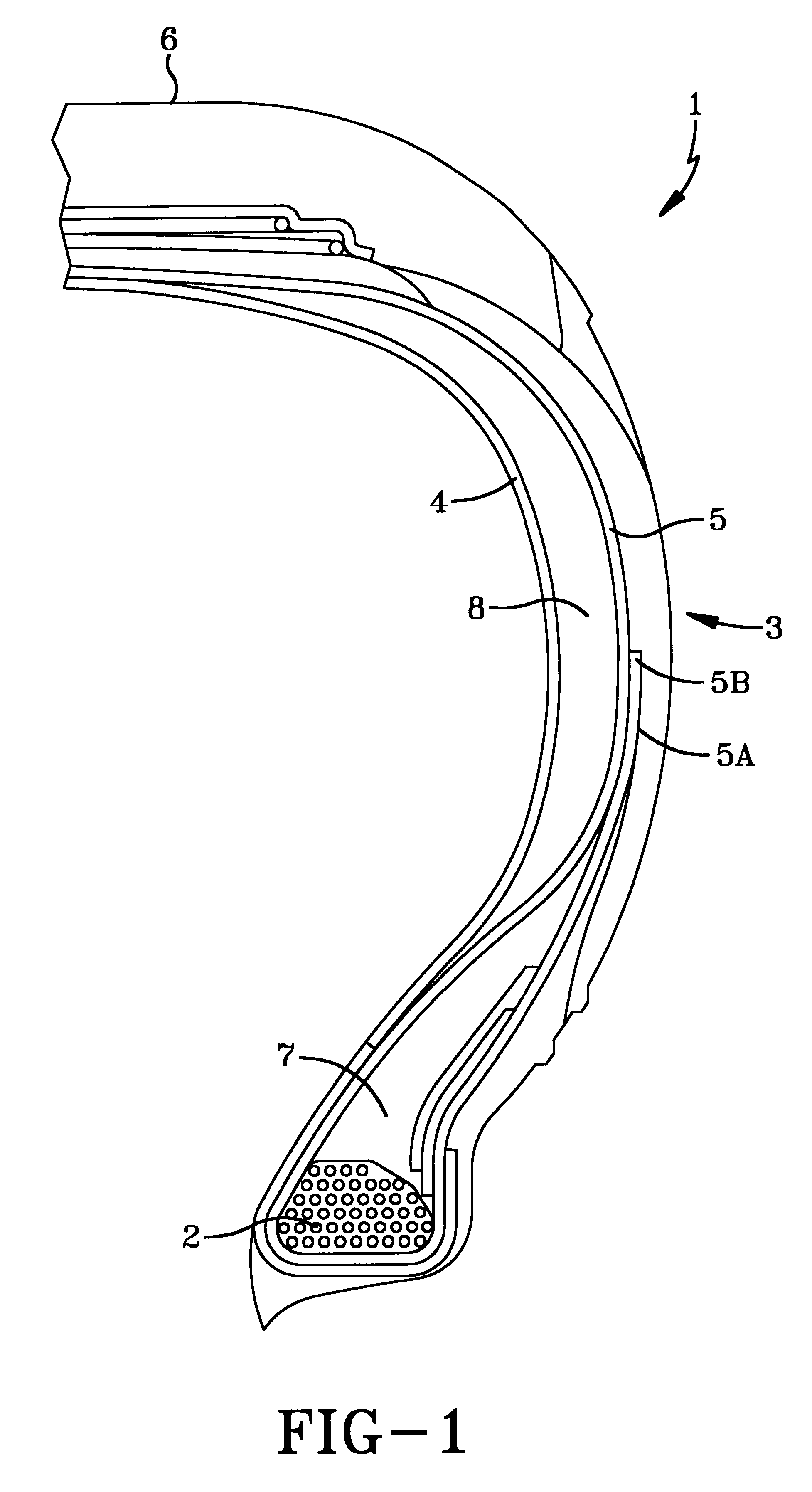Tire with sidewall rubber insert
- Summary
- Abstract
- Description
- Claims
- Application Information
AI Technical Summary
Benefits of technology
Problems solved by technology
Method used
Image
Examples
Embodiment Construction
Rubber compositions are prepared which contain the materials shown in Table 1 which recite a Control rubber composition as Sample A as well as experimental rubber compositions as Samples B, C and D which contain, variously, a dispersion of a particulate ultra high molecular weight polyethylene (UHMWPE) and starch composite.
Ingredients, other than sulfur and accelerator(s), are mixed in sequential two non-productive mixing stages to a temperature of about 170.degree. C. for about 5 minutes for each stage in an internal rubber mixer. All of the non-productive ingredients were introduced in the first non-productive mixing stage, or operation. The term "non-productive" means without sulfur curatives and is a term well known to those skilled in such art.
Sulfur and cure accelerator(s) were then mixed in a subsequent mix stage, often referred to as a "productive" mixing stage, in an internal rubber mixer for about 2 minutes to a temperature of about 115.degree. C.
Table 2 reports the cure b...
PUM
| Property | Measurement | Unit |
|---|---|---|
| Angle | aaaaa | aaaaa |
| Angle | aaaaa | aaaaa |
| Angle | aaaaa | aaaaa |
Abstract
Description
Claims
Application Information
 Login to View More
Login to View More - R&D
- Intellectual Property
- Life Sciences
- Materials
- Tech Scout
- Unparalleled Data Quality
- Higher Quality Content
- 60% Fewer Hallucinations
Browse by: Latest US Patents, China's latest patents, Technical Efficacy Thesaurus, Application Domain, Technology Topic, Popular Technical Reports.
© 2025 PatSnap. All rights reserved.Legal|Privacy policy|Modern Slavery Act Transparency Statement|Sitemap|About US| Contact US: help@patsnap.com


